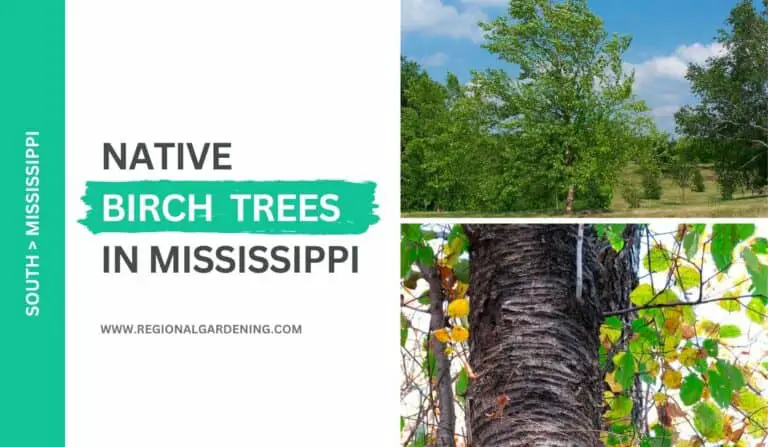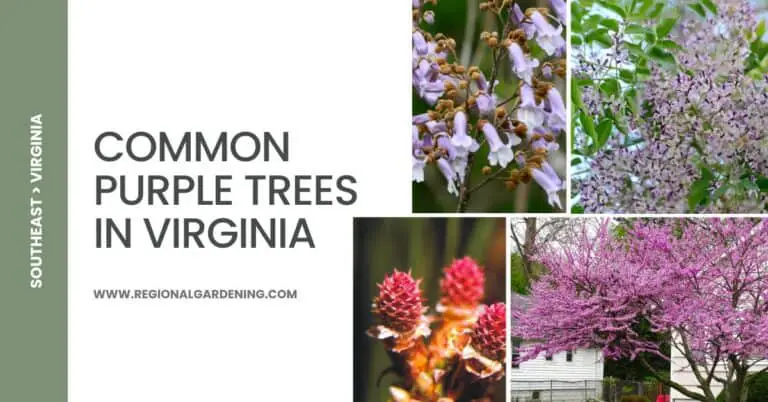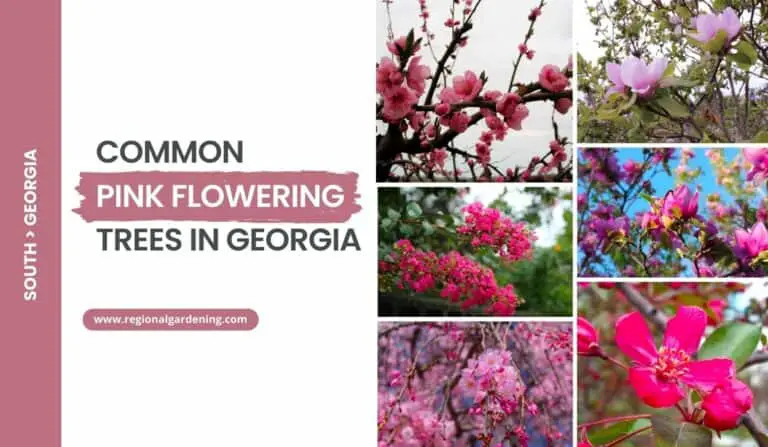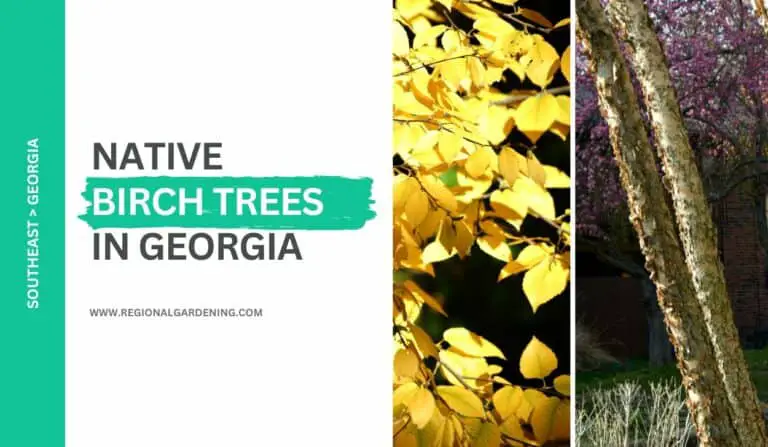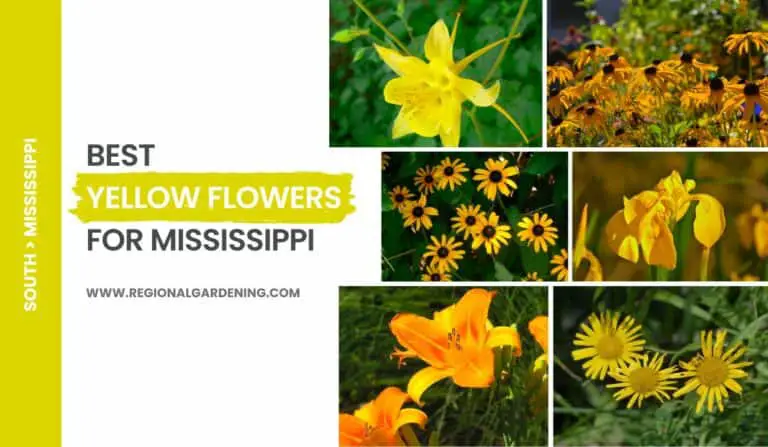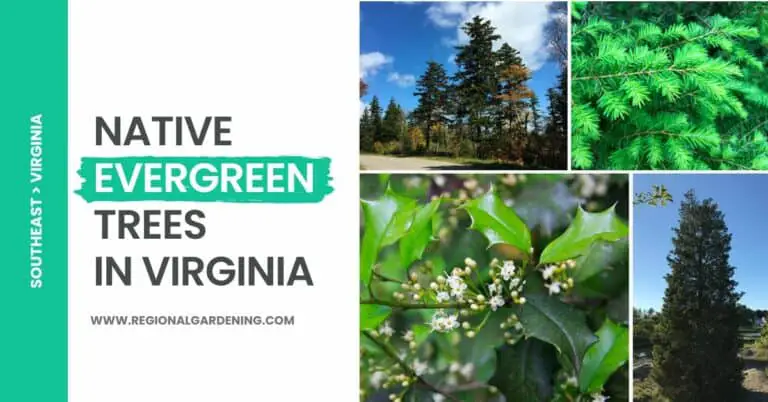3 Native Magnolia Trees In Kentucky (Stunning Pictures & Care Tips)

Consider including some stunning magnolia trees in your backyard if you are in Kentucky and want to add some floral grandeur.
This magnificent group, which belongs to the Magnolia genus, is home to about 70–80 distinct species, all of which are well-known for their enormous, distinctive blossoms. Eight of these species are native to North America, and three of them thrive in Kentucky by nature.
In this article, we will explore these three native magnolia trees in Kentucky, along with comprehensive photos, descriptions of their physical characteristics, and maintenance and care instructions.
So, let’s begin the floral adventure.
1. Cucumber Magnolia
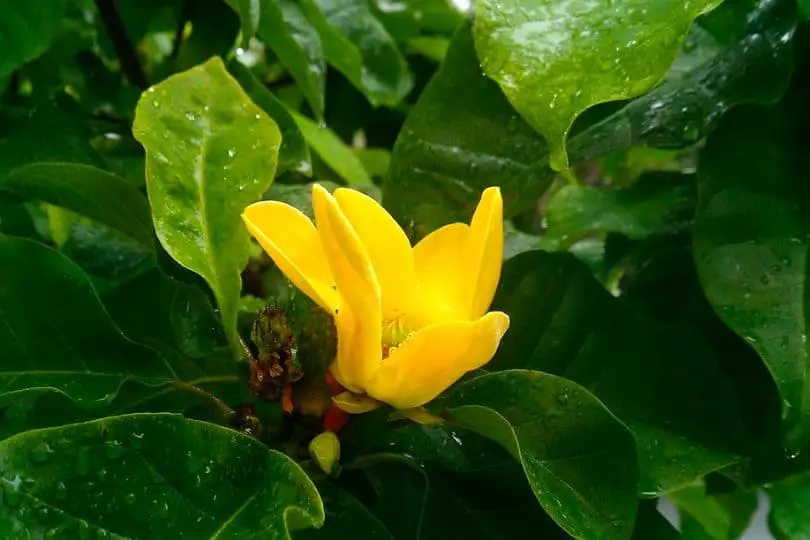
- Scientific Name: Magnolia acuminata
- Common Name(s): Cucumbertree Magnolia
- Mature Height: 50 to 80 feet
- Native Region: Eastern U.S., Kentucky native
- Flowers: Yellow-green, three-inch flowers blending with new foliage
- Fruit: Pinkish-red, cob-like seed cone
- Uses: Shade tree, wood for boxes, crates, furniture, doors, Venetian blinds; historically used for flavoring whiskey and medicinal purposes
The Cucumbertree Magnolia (Magnolia acuminata) is a well-known shade tree endemic to Kentucky. Unlike other magnolias, it is grown for its leaves rather than its blooms. When young, this tree has a pyramidal growth pattern that evolves into a broad shape with age, reaching an astonishing height of 50 to 80 feet. The deciduous leaves are particularly slender with sharply pointed edges, and they turn yellow in the fall.
This Kentucky native grows well in deciduous woods and has adapted well to its surroundings. Its three-inch yellow-green flowers blend in with the new leaves, and the fruit is pinkish-red, cob-like seed cones. The Cucumbertree Magnolia is exceptionally hardy, growing best in deep, moist, well-drained soil and preferring full sun but tolerating partial shade. It is mostly pest-free, but may meet scale insects and sassafras weevils on occasion.
Historically, early Americans utilized the bitter, immature fruit to flavor whiskey and as a remedy for fevers. Cucumbertree wood is comparable to tulip poplar wood and is used in a variety of products such as boxes, crates, furniture, doors, and Venetian blinds. This magnolia is well-suited for parks, big residential areas, and golf courses in Kentucky landscapes, thriving in open spaces with adequate care.
To achieve its full potential, the Cucumbertree Magnolia requires plenty of space and enjoys deep, moist, well-drained soil with a wide pH range. It is critical to avoid areas with high levels of precipitation, drought, or pollution. Despite preferring full light, it can tolerate moderate shade. The tree’s symmetrical shape, spreading branches, and distinctive seed cones make it an excellent addition to Kentucky gardens, providing dense shade and tropical-like leaves.
2. Bigleaf Magnolia
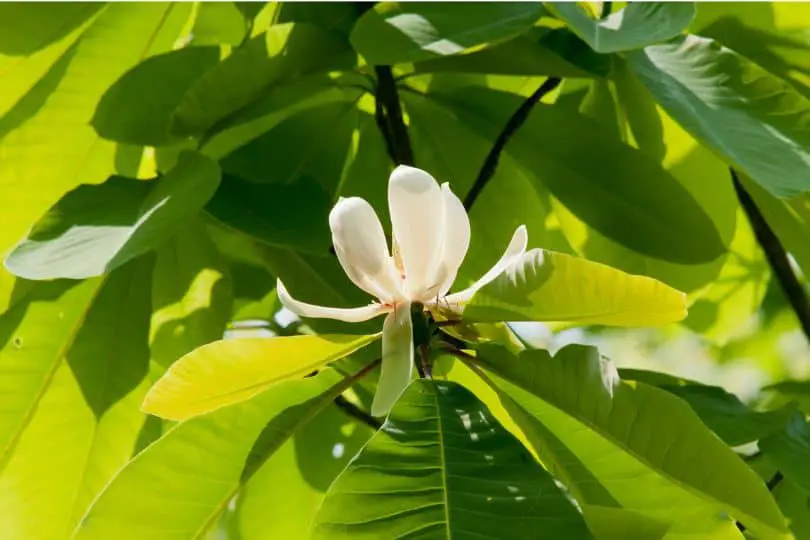
- Scientific Name: Magnolia macrophylla
- Common Name(s): Bigleaf Magnolia
- Mature Height: 30 to 40 feet
- Native Region: Ohio to Florida, Arkansas to Louisiana
- Flowers: Creamy white, up to a foot across, with a pleasant fragrance; inner three petals have purple stains near their base
- Fruit: Round to egg-shaped, rose-colored, about 3 inches long, persistent, attracts birds
- Uses: Can be used as a specimen tree or shade tree in parks or other large areas
Bigleaf Magnolia, formally known as Magnolia macrophylla, is distinguished by its huge leaves that can grow to be 12 to 36 inches long. The tree has ivory-colored flowers that are rather enormous, measuring 8 to 10 inches wide. Despite its rough appearance, it is suitable as a specimen or shade tree in large areas such as parks. It holds the national champion title, with a tree in Tight Hollow reaching 108 feet tall and 42 feet wide.
Bigleaf Magnolia grows best in full sun or partial shade, preferring well-drained sand or loam with slightly alkaline to acidic soil. The tree has a modest drought tolerance but is vulnerable to ice and wind damage. The big leaves decay slowly, causing trash. Without proper care, it has a short lifespan in landscape settings.
This deciduous tree is endemic to a wide range of states, from Ohio to Florida and Arkansas to Louisiana. It features a round, pyramidal, uneven form and stands 30 to 40 feet tall on average. The creamy white flowers, which emerge in the summer, have a nice scent. Birds are drawn to the rose-colored, persistent fruit, which is about 3 inches long.
The leaves of the Bigleaf Magnolia are alternating, simple, bright green above and silvery gray below, with a yellow fall hue. In the deep South, the tree is semi-evergreen. Its survival in landscape contexts depends on paying close attention to cultural requirements. This magnolia species, introduced into landscaping around 1800, gives a distinct and stunning presence to Kentucky gardens.
3. Umbrella Magnolia
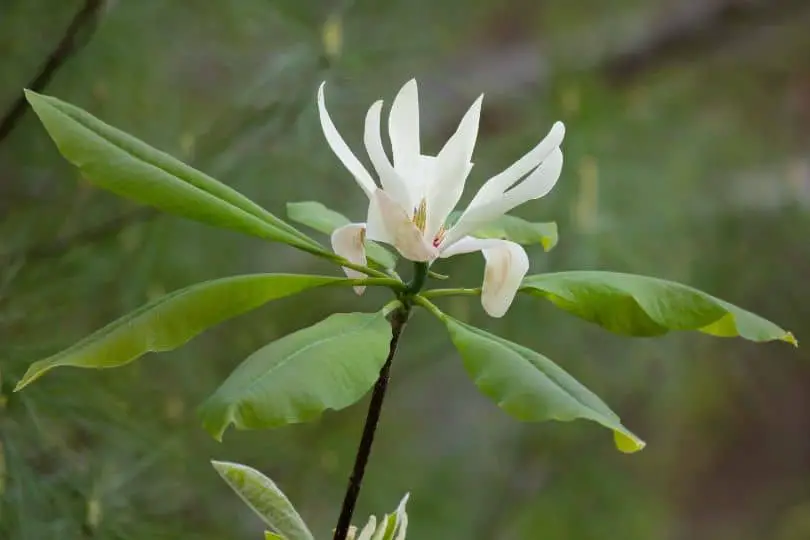
- Scientific Name: Magnolia tripetala
- Common Name(s): Umbrella magnolia
- Mature Height: 15 to 30 feet
- Native Region: Southern Pennsylvania to northern Georgia and Alabama, west to central Kentucky, Tennessee, Arkansas, and Oklahoma.
- Flowers: Creamy white, 6 to 10 inches across, borne in May to early June, with an unpleasant aroma.
- Fruit: Rosy red, cone-shaped, 4 inches long, maturing in September or October.
- Uses: shade and ornamental tree in parks or other large areas
Magnolia tripetala, often known as Umbrella magnolia, is a striking tree with creamy white flowers and rosy red fruits. The tree gets its name from its leaves, which can grow to be up to 2 feet long and cluster near branch ends, giving it an umbrella-like look.
This magnolia grows in a large range from southern Pennsylvania to northern Georgia and Alabama, and west to central Kentucky, Tennessee, Arkansas, and Oklahoma. It has an uneven growth habit with distorted or wide-spreading branches.
The tree, which grows to a height of 15 to 30 feet, has flowers with 6 to 9 tepals that are 6 to 10 inches wide and bloom from May to early June. The cone-shaped, rose red fruits develop in September or October, offering cosmetic appeal.
The umbrella magnolia flourishes as an understory tree in the wild, growing in deep, damp soils beside streams. It has alternating, simple leaves that are 10 to 24 inches long and 6 to 10 inches wide, with a dark green upper surface and a pale green lower surface. During the autumn season, the foliage turns brown and falls, adding to the tree’s seasonal attractiveness.
The umbrella magnolia is cold hardy to USDA zone 4, making it ideal for Kentucky landscaping. It is best planted in well-drained, damp soils to match its natural environment. Because it prefers streamside settings, having an adequate water supply is critical.
While cultivars are not widely accessible, the tree’s distinct appearance and decorative qualities make it a notable addition to gardens, particularly in climates comparable to its natural habitat. Local horticultural resources might provide further care recommendations for Kentucky landscapes.
Common Magnolia Trees In Kentucky – Frequently Asked Questions (FAQs)
In this section, we will answer some of the most commonon questions people have about magnolia trees in Kentucky. These questions were taken from gardening forums and other online threads.
Are there magnolia trees in Kentucky?
Yes, there are magnolia trees in Kentucky. This region’s climate and soil conditions are ideal for the growth of a wide range of magnolia species. Some of the common types of magnolias you can find in Kentucky include Cucumber Magnolia, Bigleaf Magnolia, and Umbrella Magnolia.
These trees are popular because of their lovely and fragrant flowers, which bloom in the spring or summer depending on the species. Southern Magnolia, for example, is an evergreen tree with large white flowers that can withstand the hot summers and mild winters of the state.
What should I consider before growing magnolia trees in Kentucky backyard?
Several factors should be considered before planting magnolia trees in your Kentucky backyard. First and foremost, adequate space is required because some magnolia varieties can grow up to 80 feet tall with a wide spread. Second, consider the soil type; for optimal growth, magnolias prefer well-drained, acidic, and nutrient-rich soil. Another factor is sunlight, as magnolias require full or partial sunlight to thrive. Temperature tolerance is also important. The Southern Magnolia, for example, can withstand Kentucky’s hot summers and mild winters, but other species may not. Finally, if you want to achieve a specific landscape aesthetic, consider the blooming period of different magnolia species.
What are the common uses of magnolia trees in Kentucky?
Magnolia trees in Kentucky are widely used for a variety of purposes, most notably as ornamental and landscaping trees due to their beautiful and large, fragrant blossoms that add aesthetic beauty to the environment. They are grown in parks, gardens, along streets, and in backyards.
Because of its straight grain and heavy texture, the wood from magnolia trees is used for furniture, veneer, and cabinets in addition to ornamental purposes. Furthermore, magnolia trees and flowers have cultural and symbolic significance in the region, and they are frequently featured in local festivals and events. Magnolia tree blossoms are used to make bouquets and floral arrangements. Furthermore, the bark of magnolia trees has traditionally been used for medicinal purposes.
Similar Articles
- Maple Trees In Kentucky
- Dogwood Trees In Kentucky
- Berry Trees In Kentucky
- Oak Trees In Kentucky
- Hickory Trees In Kentucky
- Cypress Trees In Kentucky
- Ash Trees In Kentucky
- Elm Trees In Kentucky
- Pine Trees In Kentucky
- Birch Trees In Kentucky
- Locust Trees In Kentucky
- Cedar Trees In Kentucky
Sources
The Regional Gardening team makes sure that the information in our articles is accurate by only using sources that are known to be trustworthy. Some of these sources are peer-reviewed journals from government agencies, well-known universities, and scientific research organizations.
- Common Kentucky Trees, Department of Forestry & Natural Sources, University of Kentucky
- Native Trees Of Kentucky, Department of Horticulture, University of Kentucky.
- Trees & Shrubs of Kentucky, Book By Mary E. Wharton and Roger W. Barbour, University Press Of Kentucky


